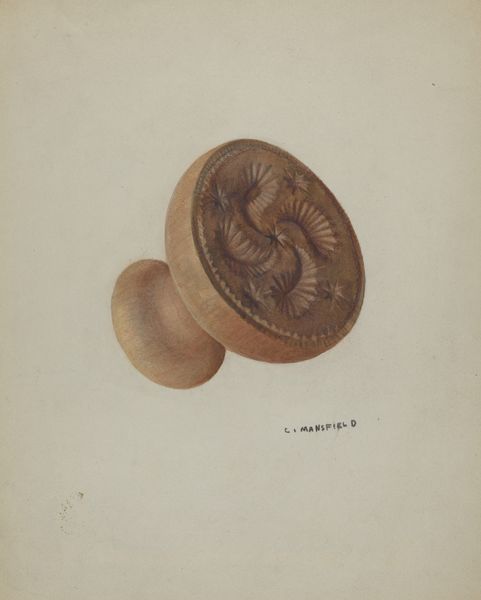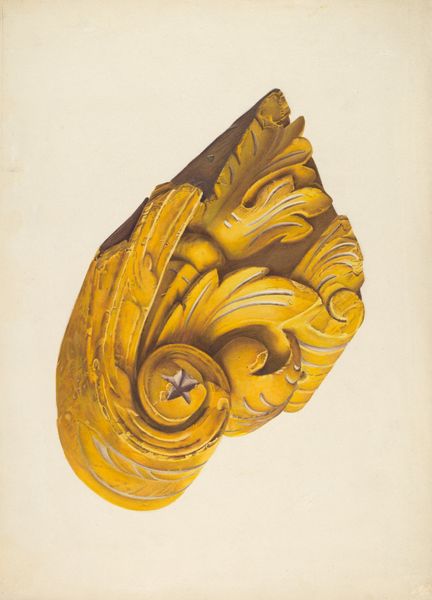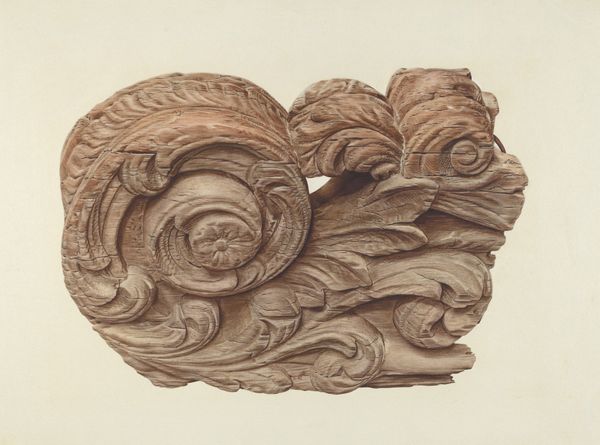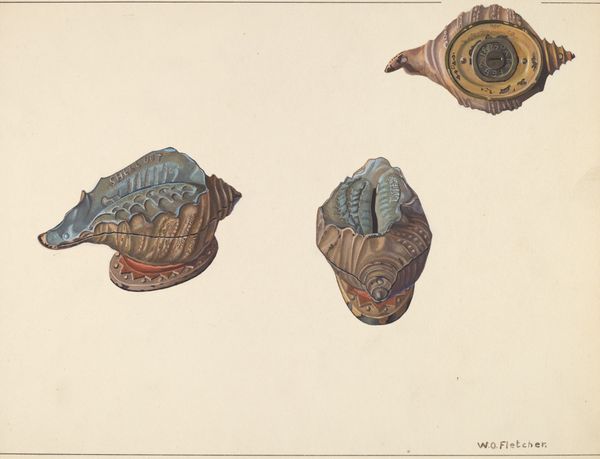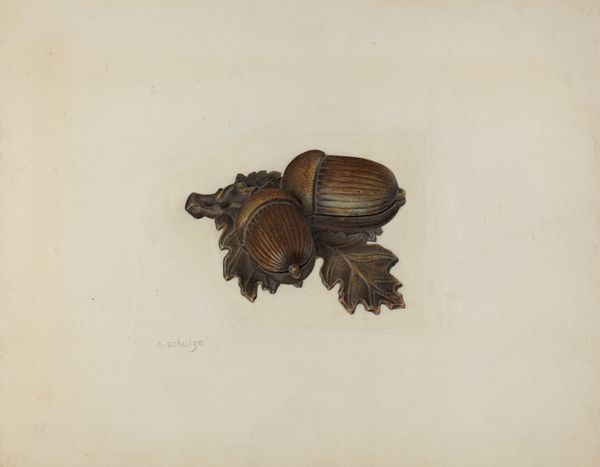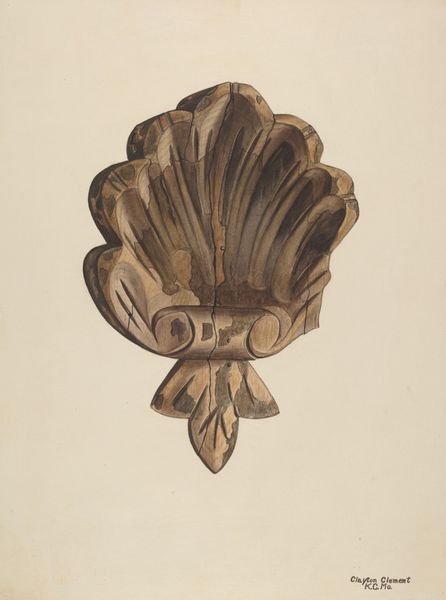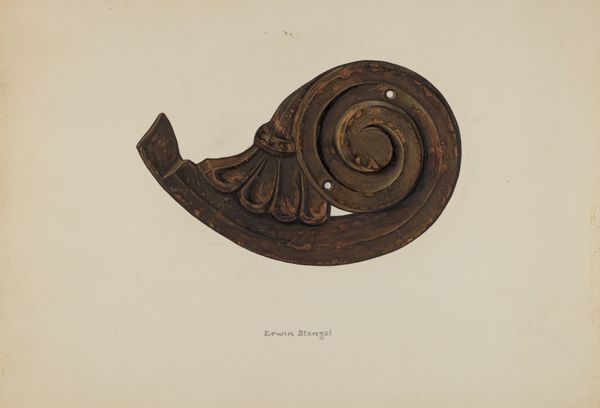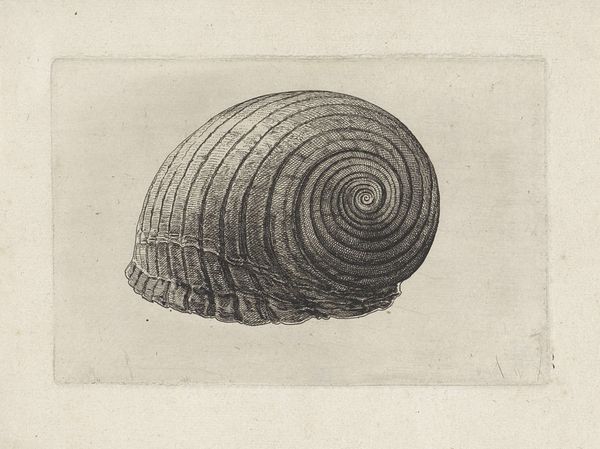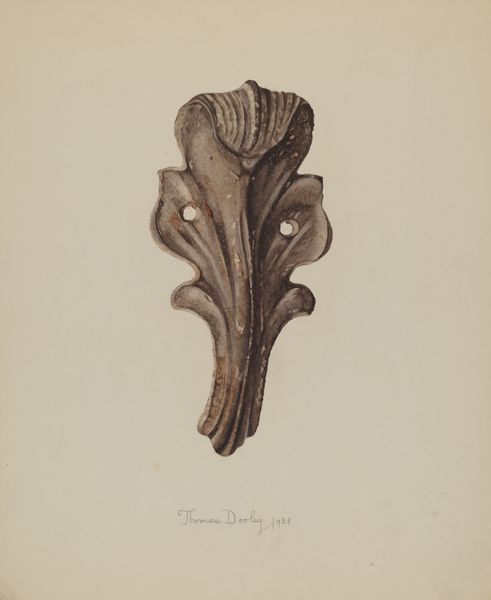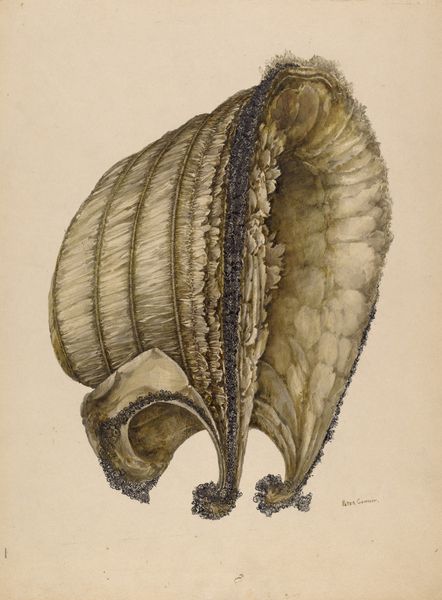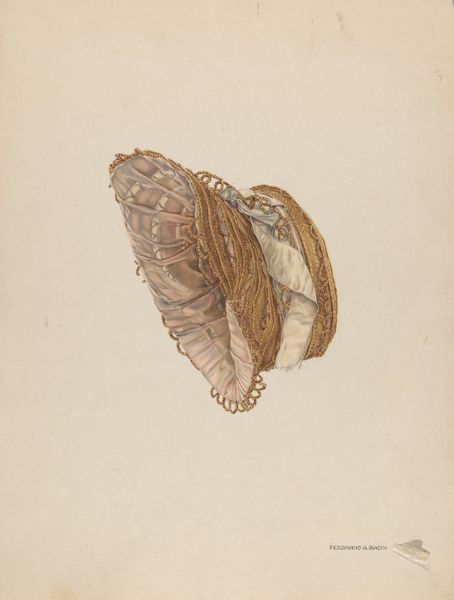
drawing
#
drawing
#
form
#
geometric
#
history-painting
#
academic-art
#
watercolor
Dimensions: overall: 41 x 30.7 cm (16 1/8 x 12 1/16 in.) Original IAD Object: 22" long
Copyright: National Gallery of Art: CC0 1.0
Editor: So, here we have Jane Iverson’s "Billethead from 'Myrtie B. Crowley'," dating back to around 1939. It’s a watercolor drawing, and I'm really struck by its textural detail and the almost fragmented quality of the form depicted. What do you see when you look at it? Curator: I see a representation of a specific cultural moment, specifically within the realm of architectural salvage and historical preservation. This work, labeled 'billethead', offers us a glimpse into the colonial revival movement gaining momentum at that time. Do you think it’s just an aesthetic study or something more? Editor: That's interesting. I hadn't considered the preservation aspect so prominently. Maybe it's about documenting a vanishing aesthetic. The choice of watercolor also makes me think of architectural renderings. Curator: Precisely! The "Myrtie B. Crowley" it references was a building. Iverson wasn't just recording a shape but memorializing a structure. What about the act of singling out and elevating a fragment to a place of its own in the visual arts? How do you view it? Editor: Isolating it like this forces you to really *see* it, almost like elevating a mundane object to art, similar to what the Dadaists did. By drawing our attention to a tiny detail, perhaps she makes us question the relationship between parts and a whole and invites us to engage with the materiality of history itself. Curator: Absolutely, that gesture reframes our interaction with history. This drawing speaks volumes about the value we, as a society, place on heritage, on fragments of the past, and on how we choose to remember – or even re-imagine – them. Editor: I never thought of it as speaking to such broad cultural trends. Now I see the historical weight it carries! Thanks for offering this new lens. Curator: My pleasure! Thinking about art through the lens of its cultural context always deepens our understanding.
Comments
No comments
Be the first to comment and join the conversation on the ultimate creative platform.
